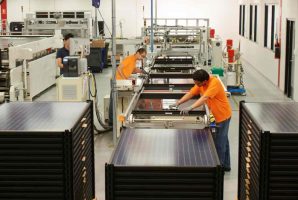The winners and losers of the latest assessment of network constraints have been revealed, with some wind and solar farms enjoying a six per cent increase in their network ratings, but others suffering a loss of five per cent or more.
The details were included in the latest Australian Energy Market Operator assessment of marginal loss factors for the coming financial year. Among the big losers are the Silverton and Lake Bonney wind farms.
Some of the biggest winners have come from solar farms in Victoria’s so-called “rhombus of regret” and in south-west NSW that had suffered badly in recent years.
Marginal loss factors decide how much of a generator’s output is credited as “delivered” to a customer. They have become a major issue in recent years because some wind and solar facilities have been shocked by their low ratings, and suffered financial losses because of it.
The MLFs are influenced by a range of factors, including the number of generators in a specific region, the number of customers and the amount of load in that area, and the availability of transmission to take it elsewhere if needed.
An MLF of 1.0 means all of the output is credited, but an MLF of 0.8 means only 80 per cent is credited. Some wind and solar farms have been surprised by their low ratings, the result of insufficient transmission or the fact that too many facilities have been built in one region.
South Australia, for instance, has suffered an overall 2.6 per cent reduction in MLFs in the latest assessment because of issues on the main link to Victoria, the failure of a key piece of machinery, a para static VAR compensator, and the construction of new projects in Victoria.
The three Lake Bonney wind units are among the worst affected, suffering a three per cent reduction from 0.9803 to 0.9585, while the Canunda wind farm also suffered a two per cent derating, but Cathedral Rocks got a small uplift.
The situation with the South Australia link has in turn led to increases for some Victorian wind and solar plants, although others in the state have been affected by reduced transmission flows north to NSW.
The Bannerton, Wemen, Kiamal, Gannawarre, Cohuna and the Karadoc solar farms got a signficant uplift, while the Murra Warra (two per cent) and Kiata wind farms, and the Numurkah and Winton solar farms were among those de-rated.
That in turn has helped south-west NSW, which enjoyed an average 2.84 per cent lift in MLFs, but these generators have also been affected by “economic curtailment”, the decision to switch off at certain times due to low prices.
Below is AEMO’s forecast economic curtailment in the coming year. The curtailment is particularly severe in South Australia, where prices plunge if excess generation cannot be exported, and in Queensland, where the midday market is cannibalised by too much solar.
In northern NSW, the competition among new solar projects has caused a reduction in MLFs, by 2.77 per cent, while the story in Queensland has been mixed.
Those in the southern area are benefiting from reduced thermal generation, but those in the north are suffering from increased competition.
In NSW, the Finley (six per cent), Sebastopol (four per cent), Darlington Point, Hillston and Junee solar farms were big winners, along with the Broken Hill solar farm. But it’s near neighbour, the Silverton wind farm, was a big loser with a 5 per cent de-rating to 0.7973.
The biggest loser in Queensland appears to be the Baking Board solar farm (down two per cent), while most solar farms in the state enjoyed small uplifts, or small downgrades in the north.











